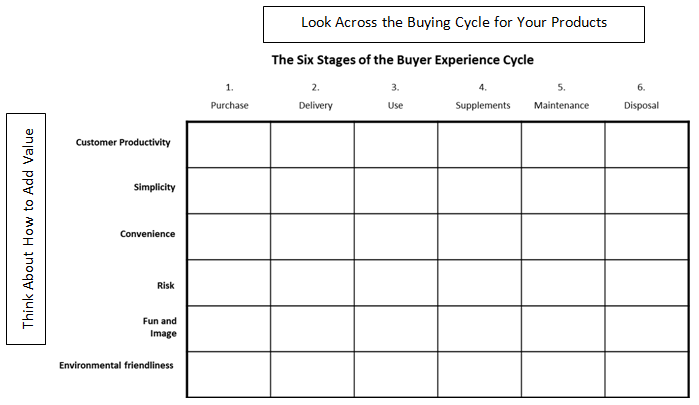 Executive Street, the daily blog of Vistage International, recently published the third blog in Andrea Simon’s “How Do I Do A Blue Ocean Strategy®?” series. In the latest installment, “How Do I Do a ‘Blue Ocean Strategy®?’: Step 3,” Andrea explains that the “that’s not our business” problem might be the next challenge facing you when you push into new markets. Often, new opportunities are waiting for you right under your nose.
Executive Street, the daily blog of Vistage International, recently published the third blog in Andrea Simon’s “How Do I Do A Blue Ocean Strategy®?” series. In the latest installment, “How Do I Do a ‘Blue Ocean Strategy®?’: Step 3,” Andrea explains that the “that’s not our business” problem might be the next challenge facing you when you push into new markets. Often, new opportunities are waiting for you right under your nose.
Andrea states that the essence of creating a Blue Ocean Strategy is grounded in the premise that you lack  information about two big areas of opportunity:
information about two big areas of opportunity:
- Non-users—who could use you but never think of you, refuse to use you, or only occasionally choose your solutions
- Unmet Needs—where are those pain points and unmet needs where people do go-around’s because they have not found a good solution
Who are Those Non-Users with Unmet Needs?
They are often right in front of you, Andrea says. One way to find them is to dig into their actual experiences when they are searching for a solution and see if you can make yours work for them. To better understand those pain points, Andrea uses the Buyer Experience Map:
For your current customers, Andrea advises you to map out the buyer experience cycle as you believe it is today.
- The Customer More Productive—that might be a strong opportunity
- Buying your solution More Simple—Simple sells better than you think
- Using it More Convenient—regardless of what you offer, Convenience can be a big differentiator
- Less Risk—take out or diminish the Risk and you can add real value
- Fun and Adventure—reverse what you know and see how you can add more Fun and Adventure across the Buyer Cycle
- Environmental Friendliness—it does matter and it could open a big market space
Think about Pain Points across the Buying Cycle.
Once you have mapped it out, go down each column and ask about the Pain Points that a potential user might have along their buying cycle. Where could you help them Get Rid of the Pain in the future? Pain Points are all those things that keep someone from finding you, buying you, using you and replenishing, supplementing or even disposing of your products/solutions.
Once you have identified what you think are the major pain points, take your map to customers and find out if you are right, Andrea writes. Where do they have trouble finding products? Is using your product more complex than you thought? Can they easily dispose of what you are selling them?
Andrea states: “Now imagine this for non-users who might be future customers of your company, if you only could better understand what their real needs were. Could you create demand for your new innovative solutions?”
The moral? Test what your gut is telling you.
Don’t stay in your office and imagine this. Once you have mapped it, get out and actually walk through the buyer´s experience yourself. Try to buy something from you and then try to use it. Experience all the moments of discomfort or outright pain.
It might seem hard to believe but those big Blue Oceans of opportunity are there. You just have to look for them with different eyes.
To read Andrea’s blog in its entirety on Executive Street, click here.
About Dr. Andrea Simon and Simon Associates Management Consultants
New York-based Simon Associates Management Consultants (SAMC) serves clients in a wide range of industries from manufacturing, OEMs, customer care, hospitals, and other healthcare institutions to colleges and service industry companies, among others. One of the keys to SAMC’s success is helping the leadership at companies to “see, feel, and think” in new ways. For more information, visit www.simonassociates.net. You also can follow SAMC on Twitter (@andisamc) or Facebook.



